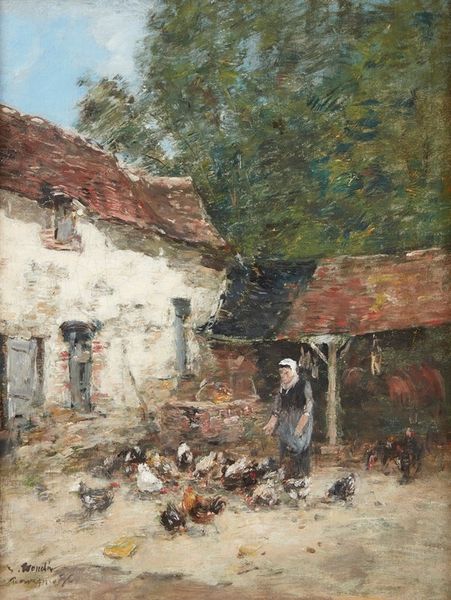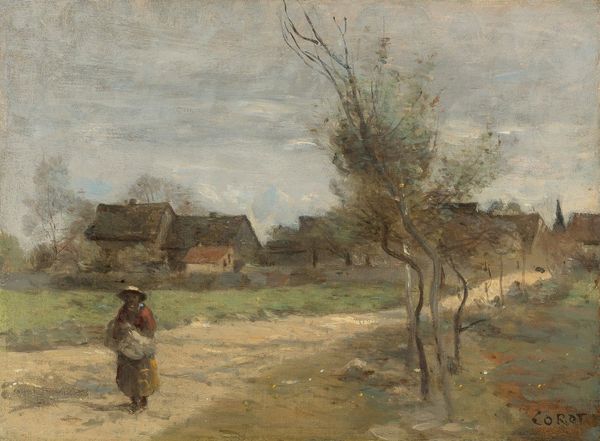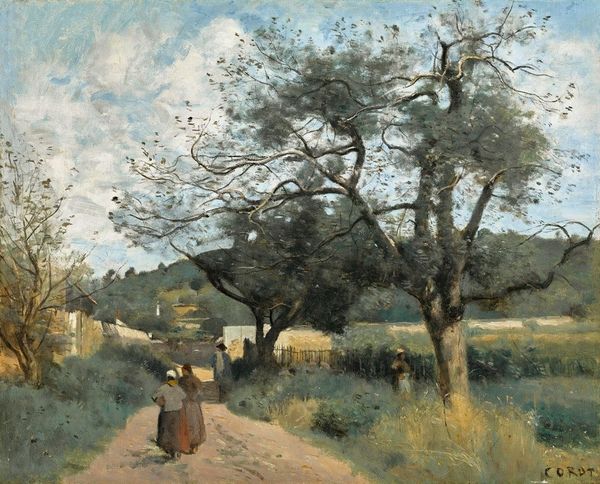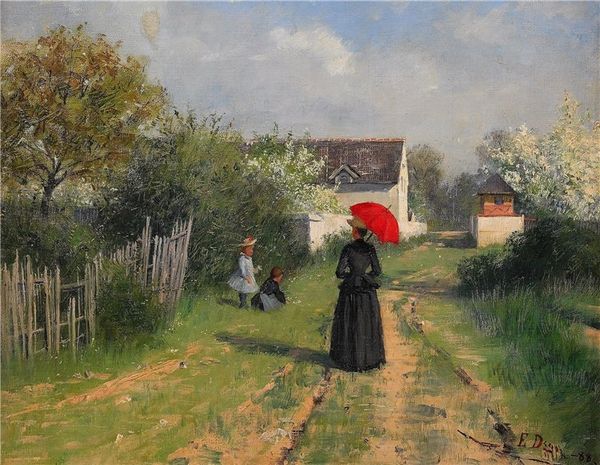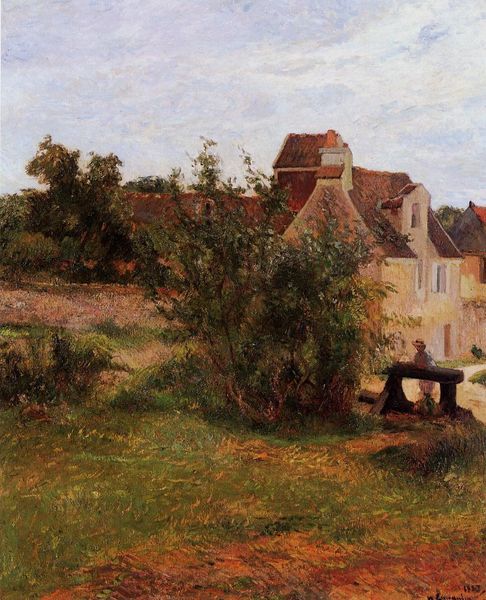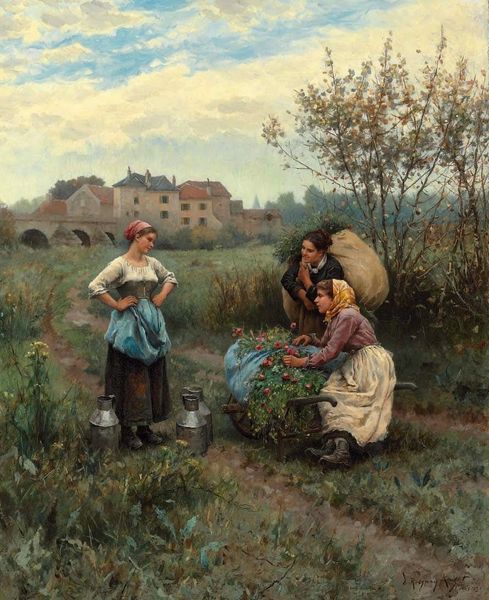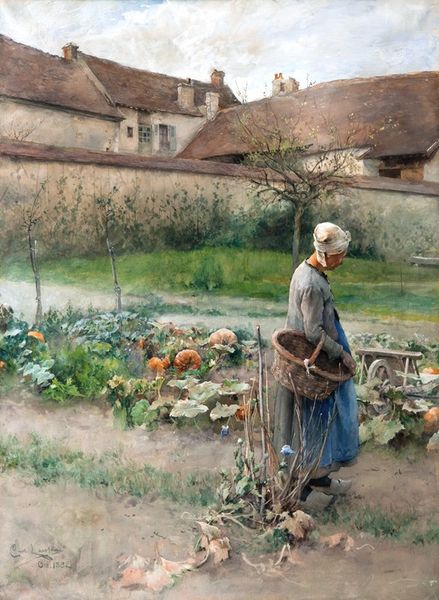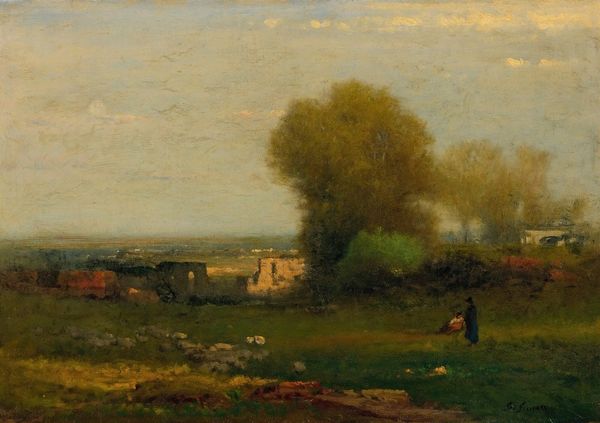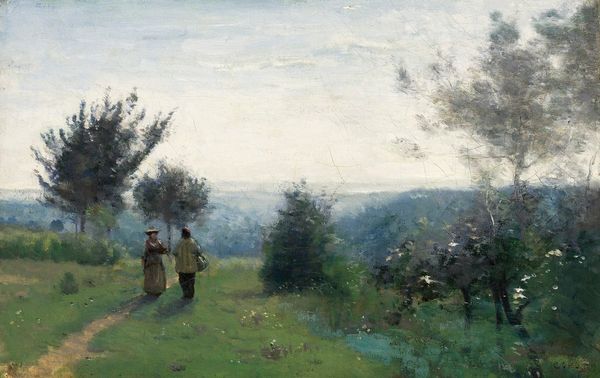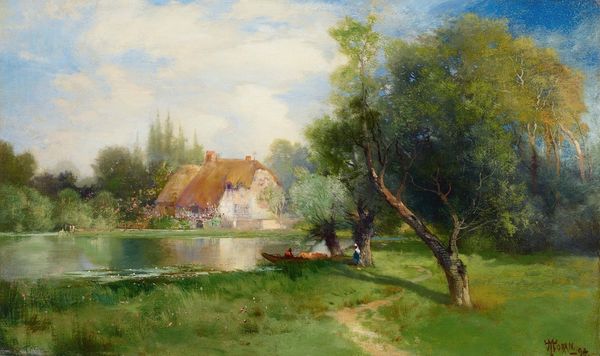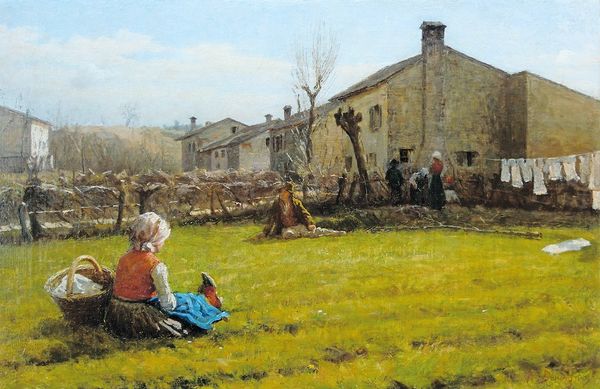
painting, plein-air, oil-paint
#
portrait
#
figurative
#
painting
#
impressionism
#
plein-air
#
oil-paint
#
landscape
#
impressionist landscape
#
oil painting
#
genre-painting
#
watercolor
Copyright: Public Domain: Artvee
Curator: Carl Larsson painted this oil painting, “A la campagne,” in 1883. Editor: My first impression is how peaceful the image is; muted tones, very gentle. It feels like a simple, perhaps romanticized depiction of rural life. Curator: Yes, the canvas reveals Larsson’s interest in capturing everyday life through plein-air techniques, a direct response to his environment and materials. It emphasizes a kind of raw documentation and process of creating art within the real world. The textures achieved are really remarkable, considering. Editor: Looking closer, I am intrigued by how Larsson represents gender and labor in the 19th century. The woman, presumably the landowner, is at work, feeding chickens. But there's a stillness to her, not an overworked drudgery, perhaps. I find that intriguing. Curator: Exactly. Larsson doesn’t romanticize or erase her labor; instead, he integrates it with the landscape, suggesting that labor is part of the materiality of rural life itself. What were the economics of chicken farming in late 19th century France, and how did they affect labor conditions? Those kinds of things can speak to class structures and material realities often unseen. Editor: This brings forth questions about the realities of rural women’s lives versus their romantic portrayals, which tend to conceal those real labor conditions. It’s crucial to question if Larsson reinforces or resists those notions and challenge historical idealizations by exploring hidden labor inequities through an intersectional approach. Curator: That makes me consider, too, the paint he employed—where it came from, the socio-economic forces that had to occur to bring that pigment to him…It also calls attention to how he is making it his own by the application, brushstroke, et cetera. Editor: Well, it certainly provides a look into the past—challenging my understanding of representation through a nuanced perspective. This encourages a re-evaluation of art historical interpretations through a critical lens. Curator: Ultimately, engaging with art through the processes and materials employed makes you more critically conscious of production's complex relationship with its material context.
Comments
No comments
Be the first to comment and join the conversation on the ultimate creative platform.

